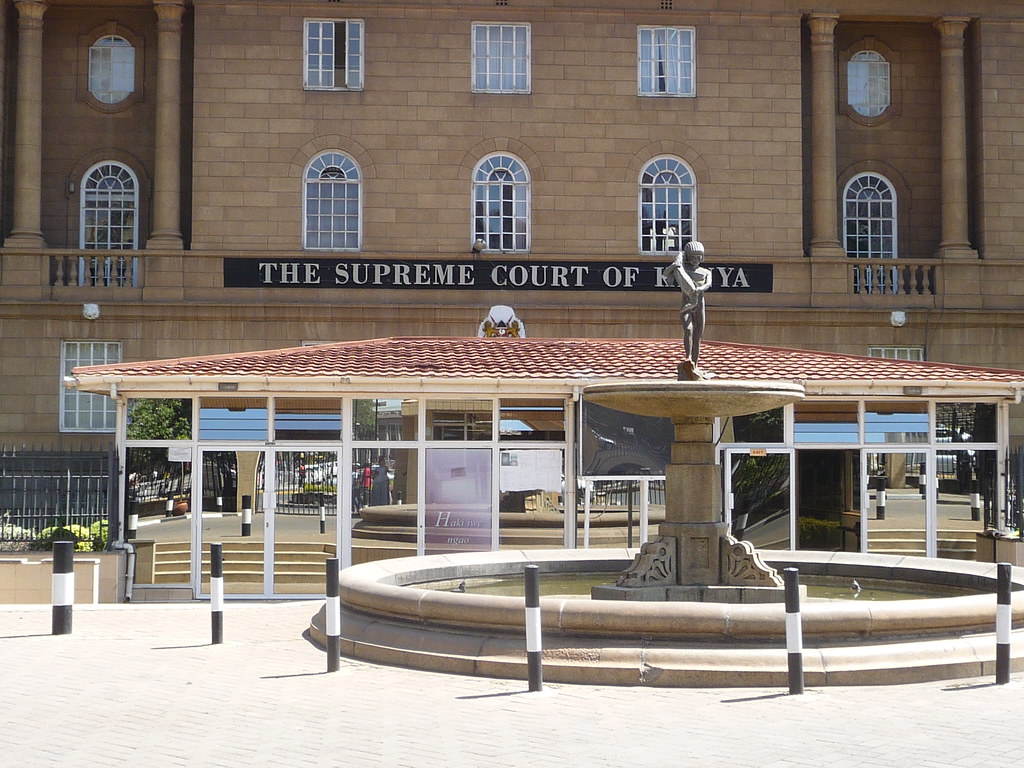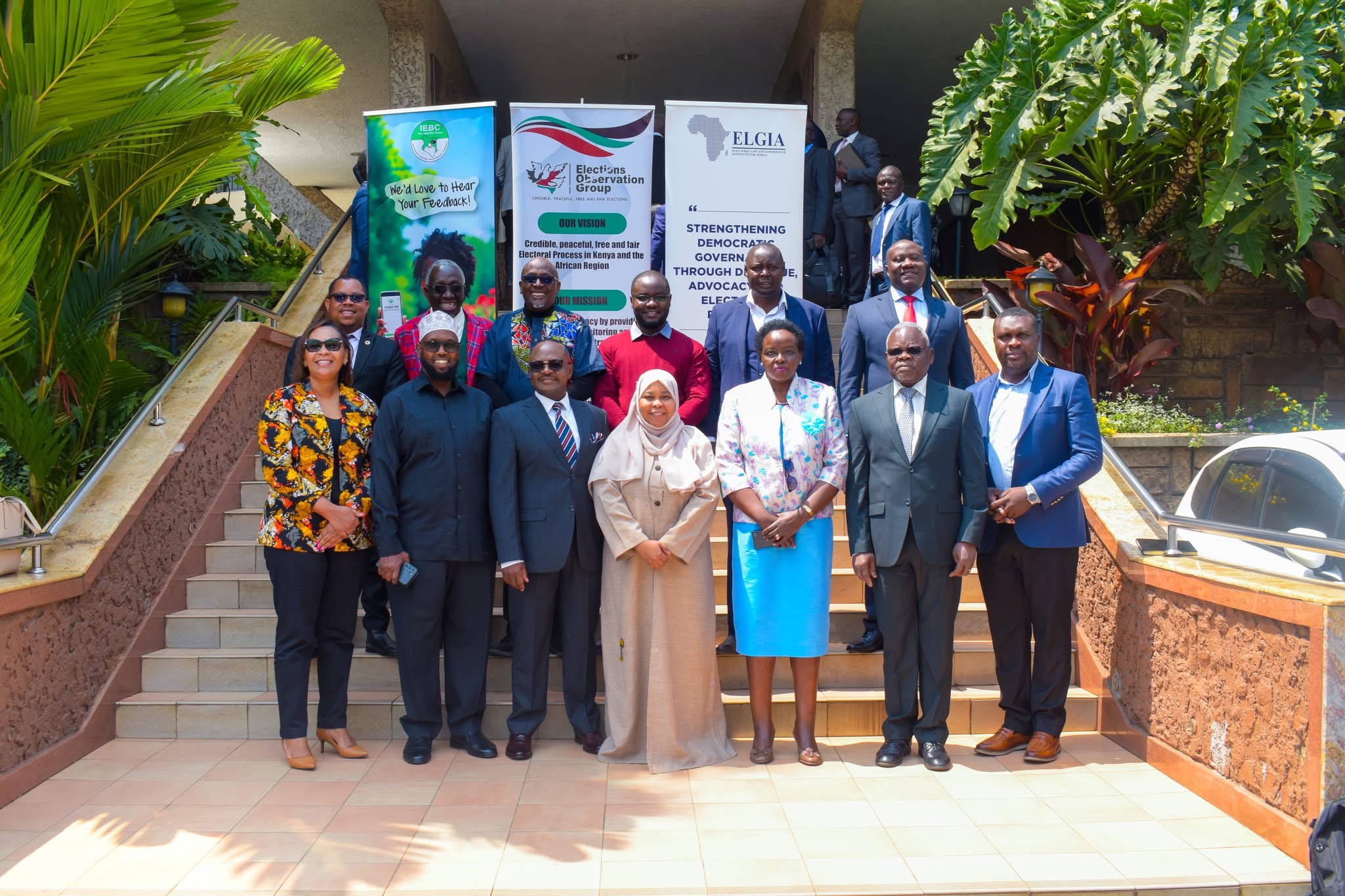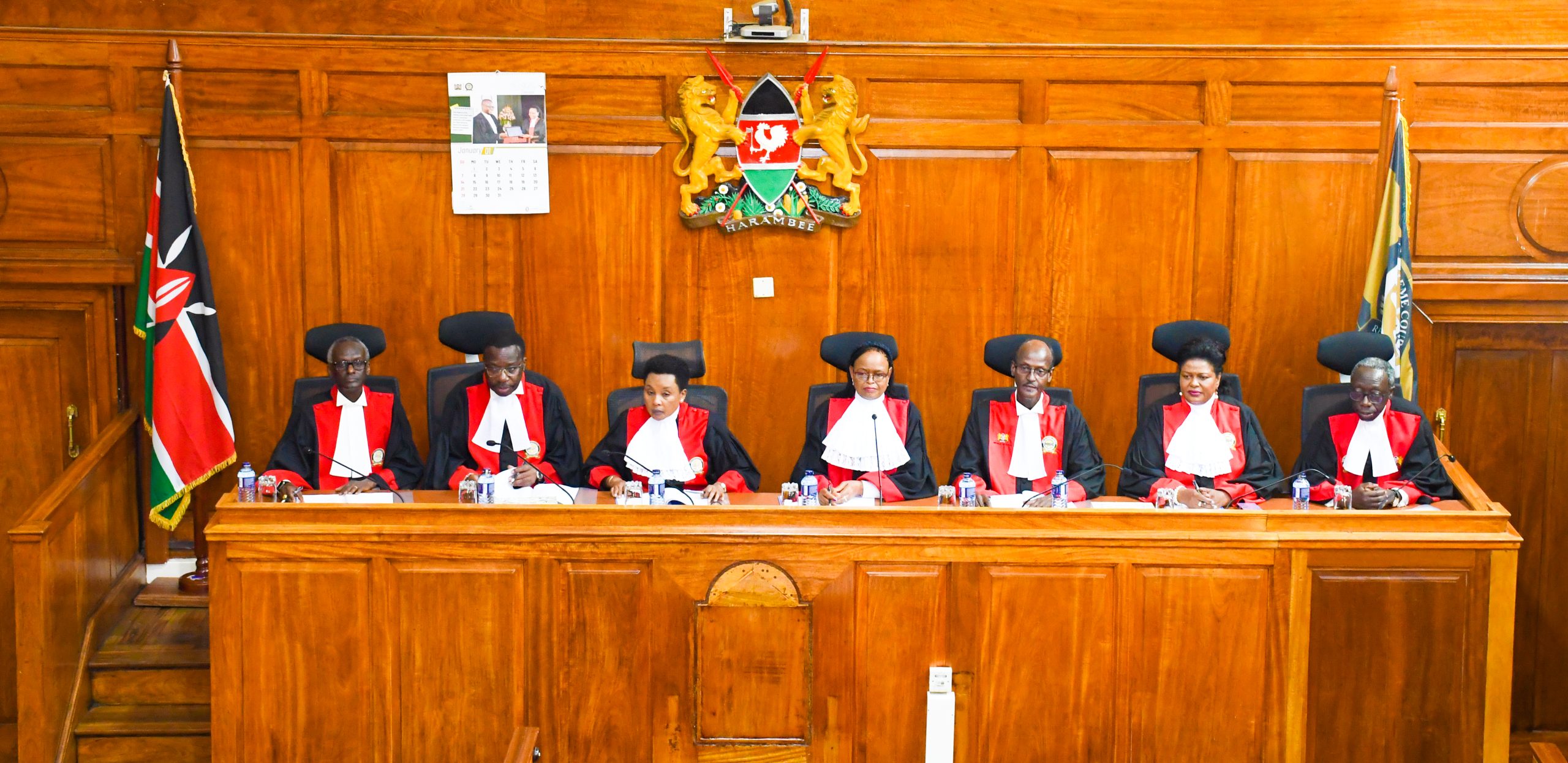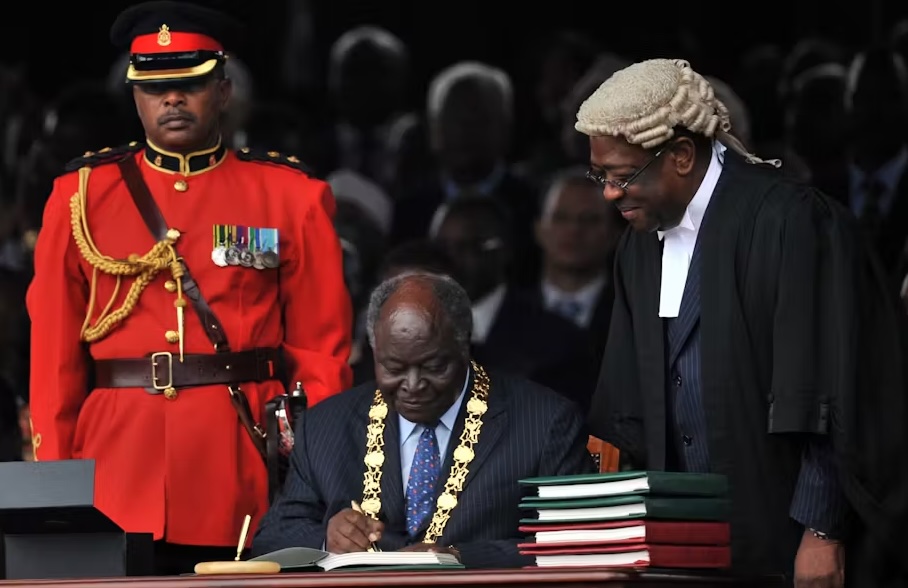The Supreme Court’s Advisory Opinion on the Boundary Delimitation Question
On 5th September 2025, the Apex Court of Kenya delivered its Advisory Opinion No. E004 of 2024 in the matter submitted by the Independent Electoral and Boundaries Commission (IEBC). This was not just another legal procurement but a moment of reckoning for the country’s electoral governance and constitutional order. The case cut to the heart of Kenya’s electoral architecture on how to handle the constitutionally mandated process of electoral boundary delimitation when the very body responsible for it had been left headless and inoperative for over two years.
The Court’s determination however, turned to be a double-edged response. On one hand the justices stretched their advisory jurisdiction to address questions about IEBC’s capacity in the absence of Commissioners. On the other hand, they refused to give a definitive guidance on the core issue—the boundaries delimitation question—arguing that without a properly constituted Commission, the request was illegitimate. This tension between intervention and restraint leaves the country in a delicate limbo as it marches towards the 2027 General Elections.
The Parties’ Positions
IEBC’s Submissions
The Commission’s argument was framed around the tension between strict constitutional timelines and the substantive principles of fair representation. While acknowledging that Article 89 set rigid timelines, it urged the Court to interpret the Constitution holistically. In its view, Articles 38 and 81, which guarantee equality of votes and political rights, could not be undermined simply because Commissioners were absent for reasons beyond the Commission’s control.
IEBC argued that excluding the period when there were no Commissioners from the reckoning of time would strike a balance between the timelines and the democratic imperative of fair representation. It cited U.S. jurisprudence such as Reynolds v Sims (1964), which emphasised “one person, one vote” to stress that delimitation is indispensable for electoral legitimacy.
The Commission also defended its right to approach the Court despite lacking Commissioners. It cited previous cases, such as Muruli v Oparanya & 3 Others (2016) eKLR, where the court had held that its institutional mandate must continue even in the absence of Commissioners. It pointed out that its Secretariat had continued to defend suits and perform essential functions and argued that seeking constitutional guidance was well within its remit.
The Attorney General’s Submissions
The AG took a contrary position. He insisted that IEBC was not properly constituted and therefore could not validly file the Reference. He replied on the principle that a corporate body can only sue or be sued through resolutions of its governing organ—in this case, the Commissioners. Without Commissioners, the Reference lacked legitimacy.
The AG also argued that the questions raised were already before the High Court in Kilifi, making the matter sub judice. He further claimed that the issues were neither novel nor urgent, since the timelines had already expired and Parliament was in the process of amending Article 89 through a constitutional amendment bill. In essence, the AG’s position was that the Court should decline to issue the advisory opinion, leaving the matter to the legislative process.
The Court’s Determination
The Supreme Court, sitting as a full bench, carefully parsed the question before it. Its response was, in many ways, a study in judicial balancing—intervening where it deemed public interest demanded it, but restraining itself where it feared venturing into hypothetical terrain.
On Jurisdiction to Render the Advisory Opinion
The Court first affirmed its jurisdiction under Article 163(6), holding that boundary delimitation concerns county governments and thus fell squarely within its advisory remit. It acknowledged however, that the Commission’s Secretary lacked authority to file the Reference on behalf of a Commission with no Commissioners. Ordinarily, thus defect would have been fatal.
Yet the Court chose to “stretch its advisory jurisdiction” in light of public interest. Drawing from its own precedents, including In the Matter of Principle of Gender Representation in the National Assembly and the Senate (Advisory Opinions Application 2 of 2012), it held that advisory opinions may be issued in exceptional cases even where procedural defects exist, so long as issues are of great public importance.
On the substance, the Court clarified the division of labour between IEBC ‘s Secretariat and Commissioners. It held that the Secretariat may perform administrative tasks—contracts, litigation, staff management—but cannot undertake constitutional functions under Article 88(4), such as delimitation of boundaries or conducting elections. These functions require the collective deliberation of Commissioners. This was a critical clarification, confirming that while the Secretariat can keep IEBC afloat, it cannot substitute the Commissioners.
On IEBC’s Mandate-taking of Boundary Delimitation in the Absence of Commissioners and Lapse of Timelines
When it came to the boundary delimitation question, however, the Court took a very different approach. The bench decline to give guidance, holding that only a duly constituted IEBC could seek directions on the effect of lapse or possible extension of timelines. To pronounce itself in the absence of Commissioners would amount to a hypothetical determination, something the Court has consistently avoided.
The Court noted the Parliament was already seized of the matter through the Constitutional Amendment Bill, 2024 which proposed mechanisms for extending timelines where necessary. It deferred to this legislative process, underscoring the principle of separation of powers. In its final orders, the Court overruled the AG’s preliminary objections but struck out the Reference for want of proper continuation of applicant.
The Road Ahead: What Next for IEBC
When the constitutional timelines lapsed in March 2024, if effectively meant that the existing constituencies and wads drawn in 2012 were no longer legally complaint. Under a strict reading of Article 89, in absence of a timely review casts doubt on the legitimacy of these units. In principle, constituencies and wards that were due for review ceased to exist in law, even though they continue to operate in practice. This legal fiction creates a constitutional gap in that if IEBC were to proceed with the 2027 elections without fresh delimitation, Kenyans would be voting in constituencies and wards whose legal foundation had expired thus exhuming illegitimacy.
The legitimacy of the 2027 elections is therefore directly tied to whether IEBC can, in the short time remaining, conduct a credible delimitation exercise. But this leads to another pressing hypothetical: if IEBC were to now conduct delimitation, blessed by the Supreme Court, what happens to the constitutional cycle of 8–12 years? Would the next delimitation be reckoned from 2024, when it should have occurred, or from 2025–2026, when it is actually carried out? If the latter, then the following delimitation would fall around 2033–2037, effectively shifting the entire cycle and creating permanent distortion.
This tension raises a constitutional puzzle: does a delayed delimitation reset the cycle, or should the next review still be tied to the original constitutional clock? If the cycle resets, the Constitution’s design of regular and predictable reviews is weakened. If the cycle does not reset, then IEBC may be compelled to conduct two delimitations within a short span—one before 2027, and another just a few years later—an administrative and political nightmare.
Equally, now that new Commissioners were sworn in on 11th July 2025, the question shifts from the Court to the Commission itself. The Supreme Court has effectively said, “this is your mandate, and only you can decide on which approach to take.” The options before IEBC are stark. The Commissioners can opt to wait for Parliament’s amendment of Article 89. This path avoids legal risk but delays action and risks further erosion of public trust, especially if political actors slow-walk the legislative process. Another option is to seek a fresh advisory opinion. Now that the Commission is properly constituted, IEBC could return to the Supreme Court for definitive guidance. This would provide legal cover but risks consuming time that is already in short supply before the 2027 elections.
The Supreme Court’s Advisory Opinion No. E004 of 2024 was both clarifying and inconclusive. It clarified the roles of IEBC’s Secretariat and Commissioners, affirming that constitutional functions cannot be undertaken in the absence of Commissioners. Yet it left the most pressing question—whether IEBC can conduct delimitation after lapse of timelines—unanswered, citing lack of a properly constituted applicant. As Kenya approaches the 2027 general elections, this unresolved question looms large. Without delimitation, the elections risk being conducted on outdated and unequal boundaries, threatening the very principle of electoral justice. The question then remains, “what will IEBC do next?” Will it boldly initiate delimitation to fulfill its constitutional duty, or will it defer to Parliament and risk undermining the credibility of the 2027 elections? The answer will shape not only the next electoral cycle but also the future of Kenya’s democratic legitimacy.
Today marks a pivotal moment for Kenya’s democratic future as the Independent Electoral and Boundaries Commission(IEBC), led by Vice Chairperson Fahima Araphat Abdallah, OGW, held a high-level round-table meeting with Civil Society Organizations (CSOs) under the Uchaguzi Platform, with support from ELOG and ELGIA.
With the 2027 General Election on the horizon, the meeting aimed to build a united front between the Independent Electoral and Boundaries Commission and civil society to strengthen electoral governance, promote transparency, and defend the sanctity of the vote.
Vice Chair Fahima, speaking on behalf of Chairperson Erestus Edung Ethekon, emphasized the Commission’s commitment to inclusive, participatory, and accountable elections.
“Your proposals will guide the development of policy and strategy to enhance participation and restore public trust in the electoral process,” she said.
The Commission also sounded the alarm on the growing threat of misinformation and disinformation, cautioning CSOs to stay vigilant against politically driven narratives that could undermine electoral integrity and national unity.
Representatives from Uchaguzi Platform, including Felix Odhiambo from ELGIA Africa and the National Coordinator of Elog-Mulle Musau, commended IEBC’s willingness to engage and pledged full support in advancing transparency, civic engagement, and accountability.
With democracy under pressure globally, Kenya is standing tall—fighting for a future where every vote counts and every voice matters. The 2027 journey starts now—and it’s a call to all patriots to guard our ballot and defend our democracy.
.
The August Question: Jurisdictional Fault Lines in Kenya’s General Election Calendar
On August 15, the Supreme Court of Kenya delivered a ruling on an application for leave to admit a filed petition regarding the next general election date. Three petitioners—Dr. Owiso Owiso, Khelef Khalifa, and Ashioya Biko—had approached the Court seeking a declaration that the next general election should be held in August 2026, not August 2027. Their argument hinged on the interpretation of Article 136(2)(a) of the Constitution, which states that presidential elections shall be held “on the same day as a general election of Members of Parliament, being the second Tuesday in August in every fifth year.” The petitioners contended that the phrase “in every fifth year” should be understood to mean “within” the fifth year, not after its completion. They calculated the current electoral cycle from the last election date—August 9, 2022—and argued that the fifth year would run from August 9, 2026 to August 8, 2027. Therefore, they claimed, the next election should be held on August 11, 2026, to avoid exceeding the constitutional term.
The application for leave was the subject of the interlocutory ruling, however the responses filed by the respondents (in the form of preliminary objections) and one interested party were directed at the petition itself. Both the Attorney General and the Independent Electoral and Boundaries Commission (IEBC) raised strong jurisdictional objections, arguing that the Supreme Court lacked the authority to entertain pre-election disputes such as the timing of presidential elections. They contended that the Court’s original jurisdiction under Article 163(3)(a) must be read in tandem with Article 140, which only empowers the Court to hear disputes arising after the declaration of a president-elect. IEBC referenced Owners of the Motor Vessel “Lillian S” v Caltex Oil Kenya Ltd [1989], which established that a court must “down its tools” the moment it realizes it lacks jurisdiction. These authorities collectively underscored that the petitioners had approached the wrong forum and that any dispute over election timing should be filed before the High Court under Article 165(3)(d), which vests it with original jurisdiction over constitutional interpretation.
Mr. Raila Odinga as the 4th Interested Party filed his preliminary objection to the application for leave, raising procedural and jurisdictional objections. In his submissions, he invoked the doctrine of res judicata, emphasizing that the question of the general election date had already been conclusively adjudicated by various courts.
In its determination, the Supreme Court struck out the application with reasons that the simultaneous filing of the petition and the application for leave to admit it procedurally untenable and legally absurd. The Court noted that once a petition is filed, seeking leave to admit it is superfluous and unsupported by any constitutional or statutory provision. On jurisdiction the Court held that its original jurisdiction under Article 163(3)(a), as read with Article 140 of the Constitution, is strictly confined to disputes arising after the declaration of a president-elect and cannot be invoked to determine pre-election matters such as the timing of a general election. To reinforce this position, it cited the case of Macharia & Another v Kenya Commercial Bank Ltd & 2 Others [2012], where the Supreme Court held that jurisdiction cannot be expanded through judicial innovation or procedural creativity. It also cited Okoiti v IEBC & Another [2020] KESC 68 (KLR) on the inadmissibility of anticipatory presidential election petitions and Ekuru Aukot v IEBC & 3 Others [2017], where the High Court affirmed that questions of constitutional interpretation—such as the meaning of “fresh elections”—fall within the High Court’s domain, not the Supreme Court’s.
Regarding the date of election, the court acknowledged John Harun Mwau & 3 Others v Attorney General & 2 Others (2012) where the High Court was tasked with determining the date of the first general election under the 2010 Constitution. While the transitional provisions in the Sixth Schedule governed the timing of the 2013 elections, the Court clarified that all subsequent elections must adhere to the fixed formula: the second Tuesday of August in every fifth year. The judges recognised that the transitional election might result in a slightly shorter term for the first set of elected officials, but emphasized that this was consequence of constitutional transition. Going forward, the Constitution mandates a fixed election date and a full five-year term for all elected officials.
In 2017, the case of Attorney General & Another v Kiplimo Sang Muge & 2 Others (2017) provided additional clarification on the constitutional meaning of the phrase “in every fifth year” as used in Articles 101(1), 136(2)(a), 177(1)(a), and 180(1) of the Kenyan Constitution. The petitioners had argued that elections should be held within the fifth year, but the Court rejected this interpretation, holding that elected officials are entitled to a full five-year term unless lawfully terminated. The judges emphasized that the Constitution must be interpreted holistically and purposively, and that the framers intended to guarantee tenure stability and electoral predictability. Any attempt to hold elections before the completion of five years would not only violate the democratic mandate but also disrupt the synchronized electoral calendar.
As the matter remains live, these precedents underscore the importance of a fixed and predictable election calendar, a principle that was central to Kenya’s constitutional reforms. They affirm that the next general election should be held on August 10, 2027—the second Tuesday of August in the fifth year following the last election.
Reflecting on 15 Years of Constitutional Electoral Reforms in Kenya
Kenyans affirmed a new social contract—one that enshrined human dignity, accountability, democracy and the devolution of power fifteen years ago. The 2010 Constitution broke the cycle of over-centralized authority and impunity. It anchored an expanded Bill of Rights, created two levels of government, and set in motion structural checks and balances through independent commissions, a reformed judiciary and a strengthened Parliament. Since its promulgation on 27th August 2010, the Constitution has reshaped Kenya’s governance, deepened citizen engagement and elevated respect for civil liberties. Grassroots participation now drives county development plans. The media and digital platforms operate more freely, enabling robust public discourse. Transparency in public finance has improved through new oversight mechanisms, while citizens can lodge rights-based petitions and challenge unconstitutional actions in court. Yet the promise of the Constitution depends not only on its text, but on the full enactment of laws that breathe life into its provisions. The Fifth Schedule set clear deadlines for consequential legislation. As we mark Katiba Day 2025, it is time to take stock of enacted milestones and spotlight the statutes yet to be delivered.
Accomplishments and Legislative Gaps in the Electoral Sector
One of the most transformative chapters of the 2010 Constitution is Chapter Seven, which redefined Kenya’s electoral framework under the banner of “Representation of the People.” To give effect to its provisions, Article 261(1), read together with the Fifth Schedule, required Parliament to enact all necessary legislation within one year of the Constitution’s promulgation. This directive was not merely procedural—it was foundational to ensuring that democratic representation, electoral integrity, and institutional independence were anchored in law.
In response, Parliament moved swiftly in 2011 to pass a suite of electoral laws. These included the Elections Act, which consolidated electoral procedures and dispute resolution mechanisms; the Political Parties Act, which regulated party registration, funding, and conduct; and the Independent Electoral and Boundaries Commission (IEBC) Act, which established the IEBC as a constitutional commission with powers over voter registration, boundary delimitation, and election management. Two years later, the Election Campaign Financing Act was enacted to regulate political spending and promote transparency in campaign financing.
A critical addition to this framework came in 2016 with the enactment of the Election Offences Act. This statute codified a wide range of electoral offences—bribery, voter intimidation, personation, misuse of public resources, and unlawful expenditure—while also criminalizing misconduct by election officials and candidates. It empowered courts to disqualify convicted individuals from contesting future elections and provided for the appointment of special magistrates to expedite electoral justice. The Act has since become a cornerstone of Kenya’s electoral integrity regime, reinforcing the constitutional principles under Articles 81 and 86.
Despite this early momentum, Kenya has yet to complete the legislative framework envisioned under Chapter Seven. Several critical enactments remain pending or unimplemented. The Referendum Bill, first introduced in 2020, is still awaiting passage. Without it, the procedural clarity required for constitutional amendments via popular initiative under Articles 255–257 remains elusive. Similarly, although the Election Campaign Financing Act was enacted in 2013, it has never been operationalized. The 12th Parliament postponed its commencement date, leaving campaign finance largely unregulated and vulnerable to opaque funding practices. Perhaps most significantly, the Two-Thirds Gender Bill—intended to give legislative effect to Article 27(8) and Article 81(b)—remains stalled in the National Assembly. This bill seeks to ensure that no more than two-thirds of members in elective and appointive bodies are of the same gender, a principle that has been repeatedly affirmed by the courts but remains unenforced due to legislative inaction. Further, there is also need for the reenactment of the Elections Act specifically the provisions for recall of Members of Parliament after said provisions were declared discriminatory by the High Court in 2017.
Recognizing the urgency of completing this legislative agenda, Parliament—through the Departmental Committee on Justice and Legal Affairs (JLAC)—has partnered with the IEBC and civil society organizations such as the Electoral Law and Governance Institute for Africa (ELGIA). These stakeholders have convened multisectoral consultative forums, reviewed existing gaps, and developed draft legislation aimed at closing the loop on electoral law reform. These bills have since been forwarded to Parliament for deliberation and enactment. As Kenya marks fifteen years of constitutional governance, the electoral and governance sector stands as both a testament to progress and a reminder of unfinished business. Completing the legislative framework under Chapter Seven is not simply a constitutional obligation, it is a democratic imperative that speaks to the heart of representation, accountability, and equity.
Kenya’s 2025 By-Elections: A Litmus Test for Electoral Integrity and Democratic Renewal
Recently, the Independent Electoral and Boundaries Commission (IEBC) released a gazette notice announcing that the by-elections shall be conducted on November 27th 2025. These by-elections, spanning both parliamentary and ward-level seats, offer a unique opportunity to assess the IEBC’s operational readiness, and commitment to democratic principles. The 24 by-elections include seven parliamentary seats—six in the National Assembly (Ugenya, Kasipul, Mbeere North, Banisa, Magarini, and Malava) and one in the Senate (Baringo County). Under the same umbrella are the 17 ward-level seats across various counties including Samburu, Nandi, Tana River, Garissa, Nairobi City, Kakamega, Elgeyo Marakwet, Machakos, Narok, Kajiado, Uasin Gishu, Nyamira, and Turkana counties.
The vacancies have arisen from a range of causes including death of some members like Kullow Hassan, MP for Banisa constituency and judicial election nullification like Harrison Kombe, MP for Magarini constituency. The delay in the Commission’s member reconstitution played an implicatory role in the by-elections delay as it lacked Commissioners to receive the notification from Parliament and commence operations to fill the mentioned vacancies. According to Article 101(4)(b) of the Constitution, Parliament is mandated to issue a writ referencing the vacancies to the Commission so that by-elections can be held within 90 days of their occurrence unless said vacancies occured within three months of an incoming General Election.
Constitutional Timelines and Public Expectations
As previously mentioned, IEBC Gazette Notice dated August 8th, 2025, announces multiple by-elections scheduled for November 27th, 2025. The document further appoints specific Returning Officers and Deputy Returning Officers for each election and establishes key dates including September 17th for political party submissions. The dates are October 2nd for candidate nominations after primaries, and October 8-9th for nomination registration, while setting the campaign period from October 8th to November 24th. Additionally, the notice establishes dispute resolution mechanisms by appointing members to both the IEBC Dispute Resolution Committee and the Electoral Code of Conduct Committee, with all appointments taking effect immediately under the authority of IEBC Chairperson Erastus Edung Ethekon.
Operational Structures and Preparedness
Electoral processes are resource-intensive, involving logistics, voter education, ICT infrastructure, and security coordination. To that effect, the IEBC has structured its internal committees to enhance day to day operations and specialization in preparation for the 2027 General Elections. Vice Chairperson Fahima Abdallah now oversees the finance and procurement committee, while Commissioner Ann Nderitu leads the election operations committee. Additionally, Mr Moses Utalala, Prof Francis Aduol and Mr Hassan Noor Hassan have been assigned to voter education, boundaries delimitation & ICT, and human resource management respectively. This decentralized approach to oversight is a positive step toward institutional reform, but its effectiveness will depend on execution and public transparency.
Civic Engagement and the Role of Stakeholders
Beyond the IEBC, the success of the by-elections will depend on active engagement from civil society, political parties, media, and the electorate. Voter education campaigns must be intensified to ensure that citizens understand the significance of these polls and their rights within the electoral process. Civic organizations can play a vital role in monitoring the elections, reporting irregularities, and fostering dialogue around electoral justice. The commission’s decision to assign Commissioner Moses Alutalala to lead voter education, partnerships, and stakeholder engagement is a strategic move. Moreover, its recent public notice to interested CSOs interested in applying for accreditation as voter education providers, election observers and media practitioners shows commitment to this initiative. However, the effectiveness of these efforts will hinge on collaboration with grassroots organizations, religious institutions, and youth networks (in the spirit of stakeholder engagement) especially in areas where political disenchantment is high.

Electoral Law and Governance Institute for Africa (ELGIA),
is a Continental Organisation working to strengthen
and consolidate constitutional democracy,good governance,
human rights,institutional strengthening of
parliament and electoral processes in Africa.
Copyright @ 2025 . ELGIA.





